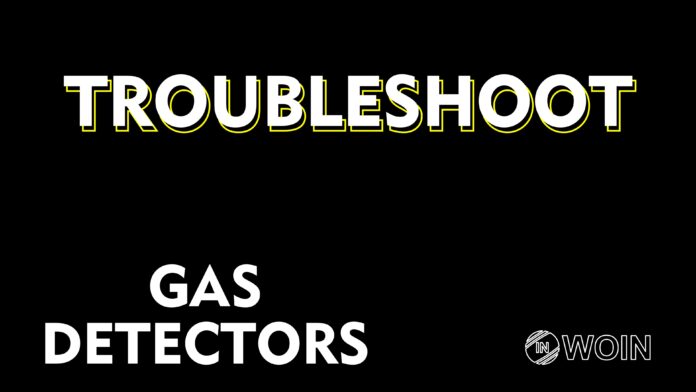In this article, you will find how you can troubleshoot Gas Detectors with each problem and its solutions.
Introduction
Welcome again to this new article on maintenance jobs. In this article, we will see the maintenance jobs on gas detectors. Different gas detectors are available like
- CO gas detector
- H2S gas detector
- Cl2 gas detector and many more
All these gas detectors are installed in areas where gas leakage chances are possible.
Problem> Gas detector showing some value when there is no gas leakage
Solutions:
- Check the gas detector physically. Spider web or dust will be present on the sensor. Open the sensor and clean the sensor with clean air.
- Power recycles the gas detector if it is not showing 0.
- Check the zero of the gas detectors in the open atmospheric air. If it is not showing 0, then calibration of the gas detector is needed. This happens because you need to 0 calibrate the gas detector in pure air. You can use pure nitrogen gas for this. If you 0 calibrate the gas detector in the atmosphere, then some other gases might be present in the atmosphere. After calibration, when these gas concentrations increase, then the gas detector will show some other readings.
- Apply 0 gas to the gas detector. Let the gas detector’s value stabilize. Do 0 calibration if the gas detector is not showing 0.
- Check the connections as per the drawing. If connections are wrong, then correct them.
- Check the barrier, if the barrier is not working properly, then replace the barrier.
- If the gas detector is not taking calibration, then the sensor will be faulty. Replace the sensor.
- Sensor life will be over. Check the sensor life by going to the diagnostics menu. If the sensor life is near the end, then you will need to replace the sensor. Replace the sensor and do the calibration. This will take more time as new sensors take time to stabilize.
Problem> Gas detector not responding to gas leakages
Solutions:
- The gas detector will be in the power-off condition. Check the supply voltage. If the supply voltage is not present, then check the cable connection, fuse, and barrier. Establish the voltage supply and make sure that the gas detector is not in faulty condition.
- Check the gas detector physically. Spider web or dust will be present on the sensor. Open the sensor and clean the sensor with clean air.
- Check the filter of the sensor. If the filter is choked, then no gas will pass from the filter. Due to this, when there is be gas leakage, then the gas detector will not sense the gas, and the gas detector will not respond.
- Power recycles the gas detector if it is not responding.
- Check the zero of the gas detectors in the open atmospheric air. If it is not showing 0, then calibration of the gas detector is needed. This happens because you need to 0 calibrate the gas detector in pure air. You can use pure nitrogen gas for this. If you 0 calibrate the gas detector in the atmosphere, then some other gases might be present in the atmosphere. After calibration, when these gas concentrations increase, then the gas detector will show some readings.
- Apply 0 gas to the gas detector. Let the gas detector’s value stabilize. Do 0 calibration.
- Check the span of the gas detector. Do span calibration if needed.
- If the gas detector is not taking calibration then the sensor will be faulty. Replace the sensor.
- Check the connections as per the drawing. If connections are wrong, then correct them.
- Check the barrier, if the barrier is not working properly, then replace the barrier.
- Sensor life will be over. Check the sensor life by going to the diagnostics menu. If the sensor life is near the end, then you will need to replace the sensor. Replace the sensor and do the calibration. This will take more time as new sensors take time to stabilize.
EndNote
I hope these resources and Knowledge will be helpful for Troubleshoot Gas Detectors
And I continue to make this type of resource and knowledge-sharing posts on my website.
if you want to write an article on the website, please contact us by this mail id: [email protected]
If you like this article, and if you want to know How to troubleshoot Conductivity Analyzer then check my previous article.
And you can also follow our LinkedIn group which is specially made for sharing information related to Industrial Automation and Instrumentation.


